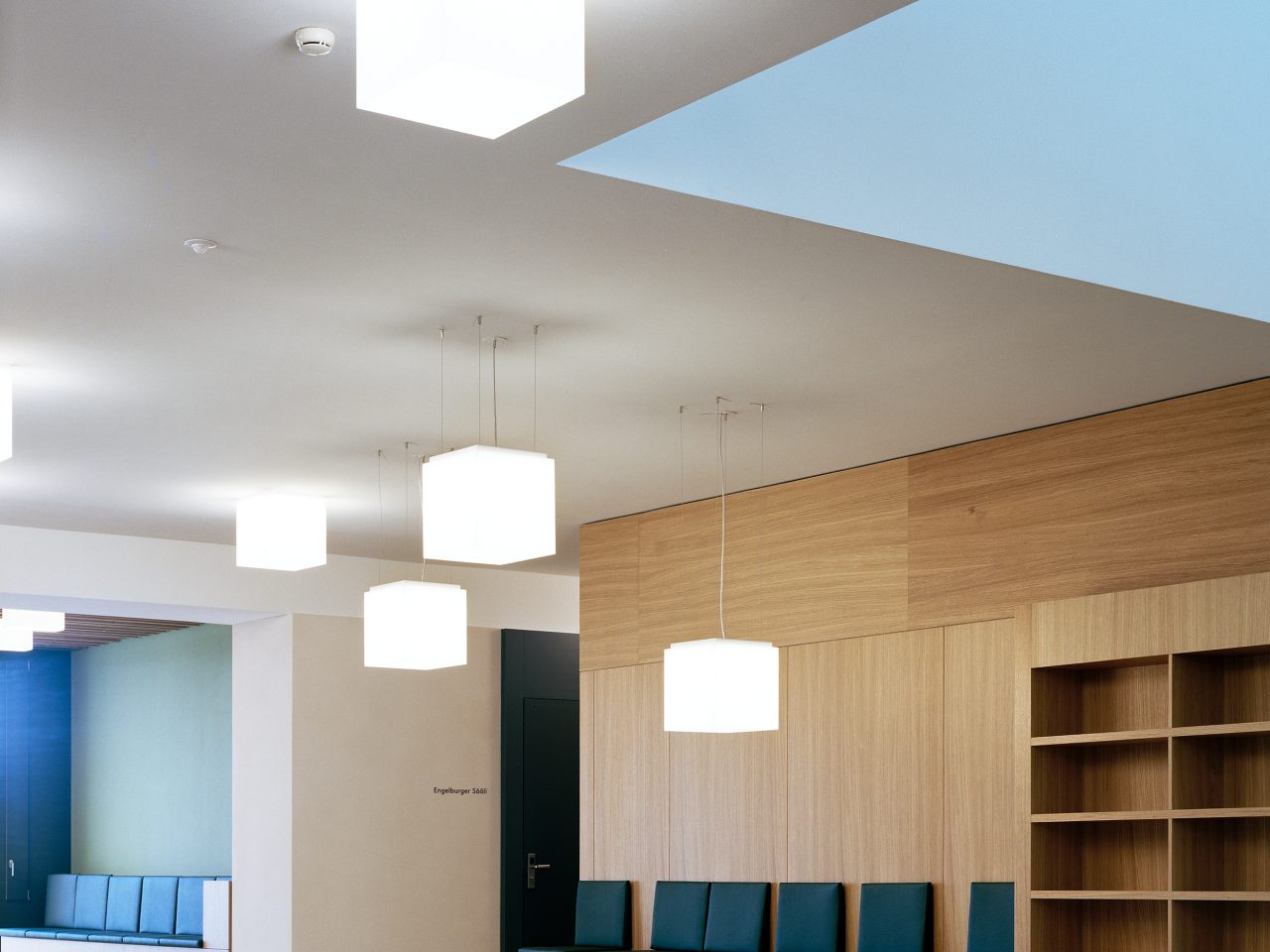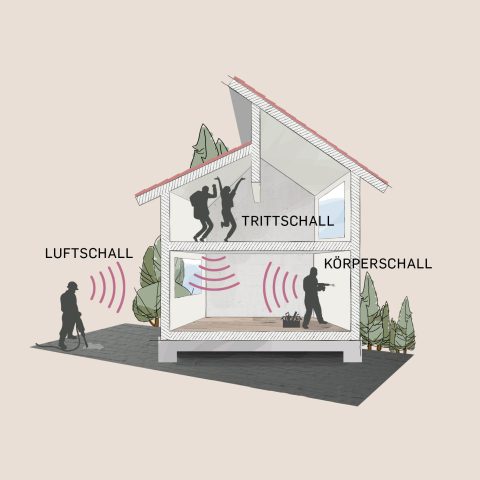Humans react to disruptive noise by releasing stress hormones, feeling uncomfortable and stressed. Concentration is lost, productivity drops and sometimes even headaches are the result. Good room acoustics are an important factor in determining whether we feel comfortable in a room. A large number of studies show that good acoustics in offices, schools or universities not only improve wellbeing, but also improve concentration, productivity and health. Find out more about acoustic ceilings, an important element in creating positive room acoustics.
The ceiling – a functional acoustic element
Today’s architecture uses many smooth elements, such as glass fronts, concrete walls or plastics, which mainly reflect sound, i.e. have very low sound absorption and lead to reverberation. The result is poor room acoustics. To improve room acoustics, the largest possible absorption surfaces are required. The ceiling is one of the largest surfaces in a room. The ceiling can therefore make a significant positive contribution to the acoustic environment. Ceiling absorbers in the form of an acoustic ceiling can significantly reduce reverberation and improve the acoustic comfort of a room.
What is an acoustic ceiling?
In construction, an acoustic ceiling is a structural element that is usually arranged horizontally. Acoustic ceilings have a high acoustic absorption capacity and reduce reverberation time. This makes them an essential component of structural measures to improve room acoustics. An acoustic ceiling, which is usually a non-load-bearing element, is attached to the load-bearing ceiling. It can be installed directly on the ceiling or suspended.
Types of acoustic ceilings and how they work
The systems available differ in construction, materials used and surface texture. Fire safety is an important consideration when designing an acoustic ceiling. Products are therefore classified into absorber classes A – E, with class A having the highest degree of absorption:
- Canopies: Ceiling canopies are very flexible and also provide high levels of sound absorption. Various acoustically effective materials such as rock wool, glass wool, textiles, gypsum or polyester are used. The materials should reduce sound reflections in the room but still be light enough to be installed in the ceiling.
- Acoustic support panels with BASWA’s fine marble sand acoustic plaster: The system can be seamlessly integrated into existing architecture and new buildings, as it is seamless, smooth and flexible in terms of colour. Since it is possible to produce the acoustic solution in a curved shape, the architecture is enhanced without compromise. Acoustic solutions from BASWA: The sound insulation you can hear but not see
- Acoustic ceiling made of cement-bonded wood wool tiles: The tiles are coloured and available in different designs. The tiles are separated by joints.
- Acoustic stretch ceilings: Textile materials are used which are stretched to create a jointless surface.
- Acoustic baffles: Acoustic baffles are suspended in rows from the ceiling. Acoustic baffles are used when sound insulation is to be retrofitted in rooms. The material used is acoustic foam. Fabric covered versions are covered with a sound absorbing and fire resistant fabric. A wide range of finishes is available for customisation.
- Acoustic cylinders: Cylindrical acoustic foam cylinders create better acoustics, especially in high spaces, due to their sound-absorbing effect.
The benefits of acoustic ceilings
The ceiling area of a room is an ideal place to achieve optimum sound insulation. As the ceiling is usually the largest contiguous surface in a room, appropriate measures can be taken to improve sound insulation in the required frequency ranges to create pleasant room acoustics. In particular, the large surface area of an acoustic ceiling can significantly reduce reverberation. One of the major challenges in the design of an acoustic ceiling is to ensure that the aesthetics of the space are not compromised and that the architectural character of the space is fully maintained.
Applications for acoustic ceilings
The applications for acoustic ceilings in the public and private sectors are almost limitless. A good acoustic ceiling solution is characterised by its versatility and flexibility, as well as its ability to blend discreetly into the existing architecture, satisfying the need for aesthetics and comfort through pleasant room acoustics.












